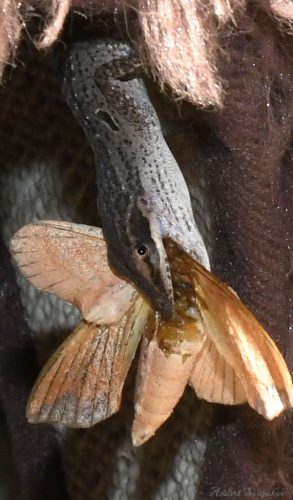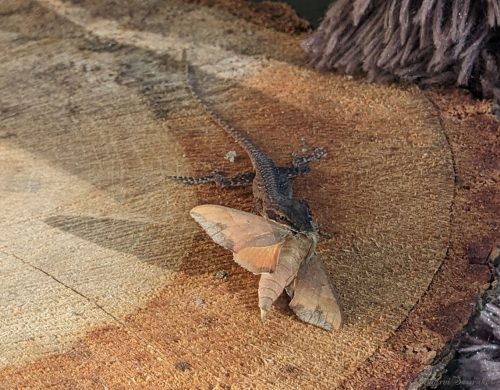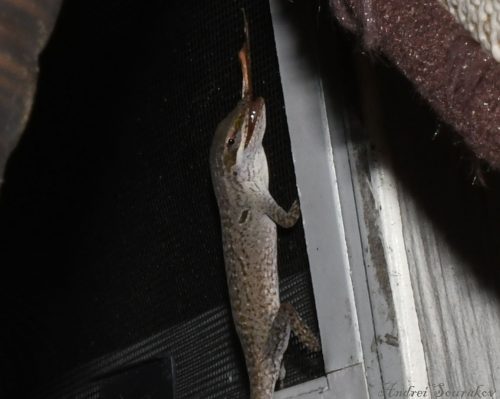
Last week, I was about to go to work, when I spotted a drama unfolding on my window: a green anole had captured a sphinx moth. Of course, I had to stop and investigate.
Moth predation by anoles is not something worth blogging about in its own right, but this sphinx moth was the size of the anole’s entire body and certainly thicker than its head. These moths are very strong fliers, and the fact that this anole could hold on to it seemed quite remarkable. My bets were on the sphinx moth escaping. And if not, I was sure the anole was not going to be able to eat it.
The anole had other plans.
Soon, another green anole approached with the obvious intention of sharing in its conspecific’s success, but the hunter preferred to dine alone, rejecting the invitation to commensalism. It relocated from the window to the table below and then to an even more secluded spot on the back of a patio chair.
My curiosity piqued, I followed.
The moth eventually stopped showing any signs of life. This was interesting, as sphingids are normally very hard to kill by pinching. Perhaps the beta-defensin peptides that green anoles possess, which are similar to reptile venom, played a role in subduing its prey: the lizard had clearly secreted something while chewing on the moth, as it was quite damp by this point.
To my amazement, the moth began to disappear, heading head-first into the anole’s mouth.


The anole was doing the trick snakes pull, which I’d had no idea anoles could do: swallowing something larger than its own head, until the entire moth disappeared.
While I ended up being quite late for work that day, I had a most original excuse: “I was watching an anole swallowing a moth.” If you want to watch it too, you can click on the embedded video below.
P.S. There is a detailed page about green anoles (link below):
ADW: Anolis carolinensis: INFORMATION (animaldiversity.org)
P.P.S. Florida Museum’s Blackburn lab created a CT scan model of the green anole’s anatomy, where one can assess the size of its stomach.